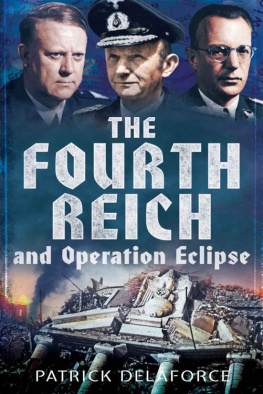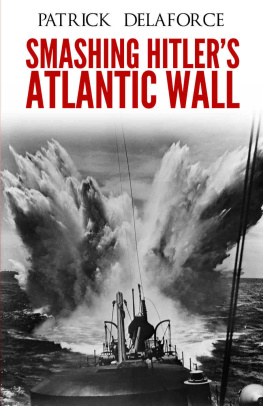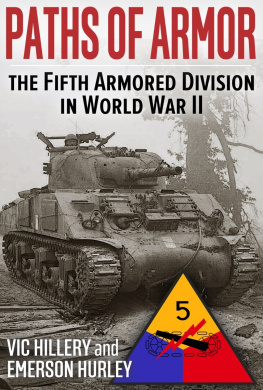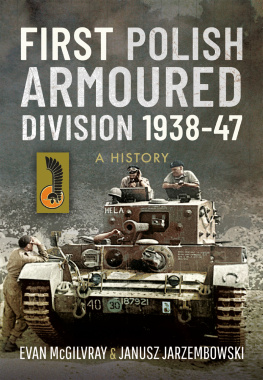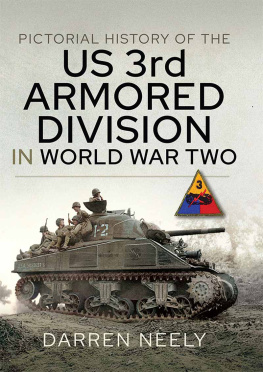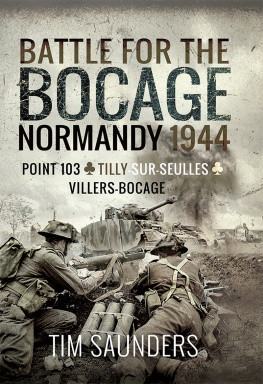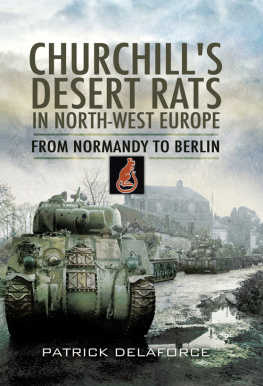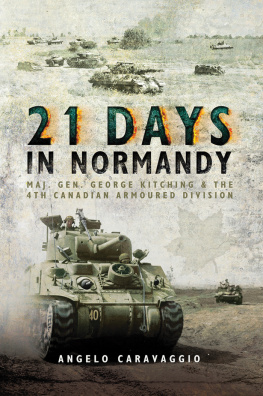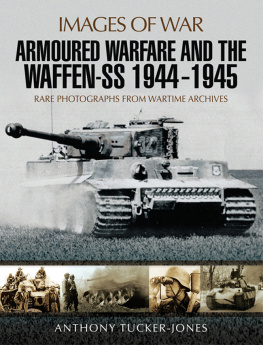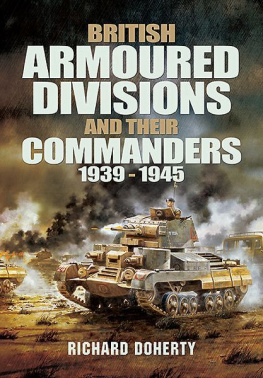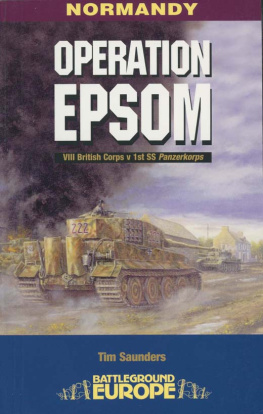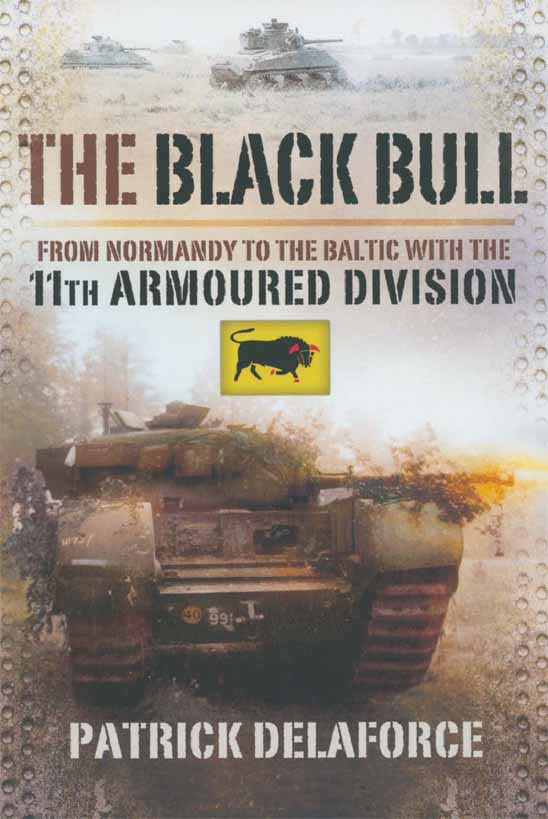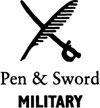THE BLACK BULL
FROM NORMANDY TO THE BALTIC WITH THE
11TH ARMOURED DIVISION
PATRICK DELAFORCE
First published in Great Britain in 1993 by
Alan Sutton Publishing Ltd.
Republished in this format in 2010 by
Pen & Sword Military
An imprint of
Pen & Sword Books Ltd
47 Church Street
Barnsley
South Yorkshire
S70 2AS
Copyright Patrick Delaforce, 1993, 2010
ISBN 978 1 84881 228 1
The right of Patrick Delaforce to be identified as Author of this work has been
asserted by him in accordance with the Copyright, Designs and Patents Act 1988.
A CIP catalogue record for this book is
available from the British Library
All rights reserved. No part of this book may be reproduced or transmitted in any
form or by any means, electronic or mechanical including photocopying, recording
or by any information storage and retrieval system, without permission from the
Publisher in writing.
Printed and bound in England by
CPI Antony Rowe, Chippenham, Wiltshire
Pen & Sword Books Ltd incorporates the Imprints of Pen & Sword Aviation,
Pen & Sword Family History, Pen & Sword Maritime, Pen & Sword Military,
Wharncliffe Local History,
Pen & Sword Select, Pen & Sword Military Classics, Leo Cooper,
Remember When, Seaforth Publishing and Frontline Publishing
For a complete list of Pen & Sword titles please contact
PEN & SWORD BOOKS LIMITED
47 Church Street, Barnsley, South Yorkshire, S70 2AS, England
E-mail: enquiries@pen-and-sword.co.uk
Website: www.pen-and-sword.co.uk
Contents
| Acknowledgements |
| 1. | The Sharp End |
| 2. | In the Beginning |
| 3. | Weaponry |
| 4. | Forming Up |
| 5. | War is Mostly about Waiting |
| 6. | Cry Havoc and Let Slip the Dogs of War |
| 7. | Operation Epsom |
| 8. | Interlude |
| 9. | Operation Goodwood |
| 10. | Another Interlude |
| 11. | Operation Bluecoat |
| 12. | Breakout |
| 13. | The Great Swan |
| 14. | The Taking of Antwerp |
| 15. | Prelude and Right Flank to Market Garden |
| 16. | Holland and the Peel Country |
| 17. | In the Bleak Midwinter: October |
| 18. | In the Bleak Midwinter: November |
| 19. | In the Bleak Midwinter: Leave |
| 20. | In the Bleak Midwinter: December |
| 21. | The Ardennes |
| 22. | In the Bleak Midwinter: January |
| 23. | In the Bleak Midwinter: February |
| 24. | Operation Blockbuster: the Hochwald Battle |
| 25. | Another Interlude: March |
| 26. | The Rhine Crossing and Advance |
| 27. | The Battle for Teutoburger Wald (Ibbenbren Ridge) |
| 28. | The River Weser Crossing |
| 29. | From the Weser to the Aller |
| 30. | Towards the Elbe |
| 31. | Belsen |
| 32. | The Last Stretch |
| 33. | Round-Up |
| Contributors to The Black Bull |
The Division fought as a closely-knit, well-trained team, so it is not surprising that representatives of all arms should have contributed to the making of this book. I am particularly grateful to Major-General G.P.B. Roberts DSO, MC, for allowing me to include extracts from his memoirs in this book. He was the outstanding leader of the outstanding division in the Normandy to the Baltic campaign. At the end of the book I have referred with many thanks to the score or two of Sharp End soldiers who have made this book so interesting. They have helped recreate the true images of war the moments of noise, pain and death, the silence and the boredom, the contrast of happy leave and the occasional front-line humour. There have been contributions from the armour, infantry, reconnaissance, gunners, sappers, REME, RASC, RAChD, RAMC and CMP. Many photographs have been loaned for inclusion in The Black Bull, particularly from Ted Deeming, David Swiney and Bob Walmsley. Maps are reproduced by the Army Training Aids and Publications to the drawings of Major Ned Thornburn MC 4KSLI.
If there are errors of names, dates and places they are mine alone.
Patrick Delaforce
Brighton, May 1993
Nobody enjoys fighting, Lieutenant-General Brian Horrocks, XXX Corps Commander, wrote in his autobiography, Yet the forward area in any theatre of war, the sharp end of the battle, as we used to call it, is inhabited by young men with a gleam in their eye who actually do the fighting. They are comparatively few in number and they are nearly always the same people.
For nearly a year from June 1944 to May 1945 British, Canadian, American and Polish armies fought a dreadful, bloody campaign to free first France, then Belgium and Holland, of their Nazi occupants. And finally the Allies blasted their way across well-defended river barriers up to Schleswig-Holstein and the Danish borders. The British 11th Armoured Division, with its famous emblem of the black bull rampant, red hooves on a yellow ground, led the field.
This book contains accounts written by the twenty-year-old virgin soldiers who took part in the dramatic battles. Virgin because, with the exception of the distinguished GOC Major-General Pip Roberts DSO, MC, who had won his spurs in the Desert, most regimental commanders and the gallant 3rd Royal Tanks, the rest of the Division had never been in action before.
In his book, The Tanks, Captain Liddell Hart wrote: within a few months, 11th Armoured achieved a reputation in Europe matching that which the long-famous 7th Armoured Division had gained in Africa. Its outstanding performance in 19445 owed much to the leadership of Pip Roberts who at thirty-seven was the youngest of all the divisional commanders in the campaign. And the GOC British 2nd Army, Lieutenant-General Sir Miles Dempsey, wrote on 5 August 1945: The 11th Armoured Division proved itself throughout the campaign in North-Western Europe an outstandingly fine division. I have never met a better. Even after sustaining considerable losses [10,000 casualties including 2,000 killed] and the 11th Armoured Division had heavier casualties than any other armoured division in Second Army there was always a sound and well-trained nucleus to fall back on. The division was brimful of that priceless asset confidence.
In one days brutal fighting east of Caen during Operation Goodwood, 115 tanks, nearly 50 per cent of the total, were brewed up or written off by assorted Tigers, Panthers, Mark IVs and 88-mm guns. Above all the Normandy campaign was a full-blooded war of attrition.
Twentieth-century front-line war is a curious mixture of terror, noise and fear mingled with interludes of rest, routine, even boredom, laced occasionally with humour. The forward troops would often consist of two very young men, crouching together in a fox-hole. Alone, for they might not be able to see the rest of the section. Probably cold, miserable and hungry, in a sinister emptiness. Safe as long as they stay in their slit trench, but very vulnerable once they are ordered to move forward into a violent future. Spandau, schmeisser, nebelwerfers, grenades and mines everywhere, but they almost certainly cannot see where the danger is located.


